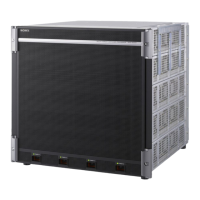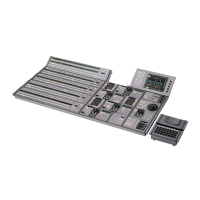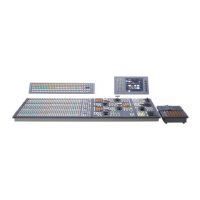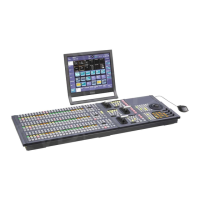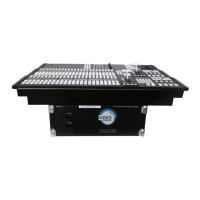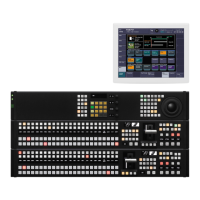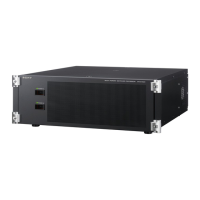Chapter 11 DME Operations
688
DME Special Effect Operations
• When the global effect Combiner is enabled, the settings of the smallest-
numbered channel selected for the Combiner are used.
Adjustments to the image surface
The following adjustments can be made to the image surface struck by the
light.
• Adjusting the brightness of the whole image
• Selecting the image surface effect
• Test sphere function
• Adjusting the bumpiness of the image surface
• Coordinate axis on surface of image
• Texture deformations
Selecting the image surface effect
Flat: The image surface is unchanged, causing the selected light source to
appear as the effect.
Texture: A texture appears on the surface of the image. Textures can be
selected from among 30 patterns.
See “Texture Patterns” (page 1012) for the texture patterns.
Non Linear: Spotlighting effect is applied to an area to which a DME
nonlinear effect is applied.
Notes
The BZDM-9050 is required to enable Texture and Non Linear settings.
Test sphere function
A test sphere is a translucent sphere virtually embedded in the center of the
input picture to provide an intuitive way for you to check the position and
direction of the spotlight. When you change the position or direction of a light
source, the side of the sphere closest to the light source grows brighter. You can
easily check the position and direction of the light source by viewing the test
sphere.
For more information about test sphere, see “Relation between test spheres
and parallel rays” (page 692).
Coordinate axis on surface of image
Specify where to apply the texture or test sphere on the image surface.
Move: The texture moves together with the DME image.
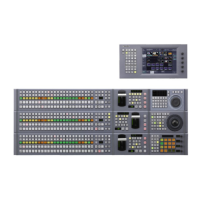
